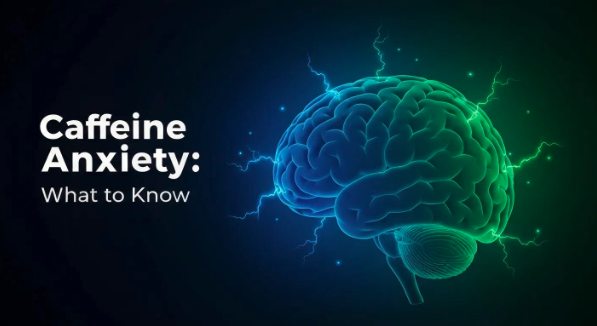Panic Disorder: Recognize and Manage Panic Attacks Effectively
Discover panic disorder: recognizing and managing panic attacks with proven techniques and therapeutic insights.

Understanding Anxiety Disorders
Anxiety disorders are among the most prevalent psychiatric conditions in the general population. Understanding these disorders includes examining their prevalence and the symptoms associated with pathological anxiety.

Prevalence and Gender Differences
Anxiety disorders, particularly specific phobias, demonstrate a notable prevalence within the population. According to research, specific phobia carries a 12-month prevalence rate of 12.1%, with a higher occurrence in females at an approximate ratio of 2:1 [1]. Panic disorder affects approximately 1 to 3 percent of the general population over their lifetime and is seen more frequently in European Americans compared to other racial groups [2].
Disorder12-Month Prevalence RateGender Ratio (Female:Male)Specific Phobia12.1%2:1Panic Disorder1-3%Varies
Symptoms of Pathological Anxiety
Pathological anxiety encompasses a range of symptoms that can impact daily functioning. These symptoms are generally categorized into cognitive, physiological, behavioral, and affective types [1].
Recognizing these symptoms is vital for effective management and treatment. For a deeper exploration of different types of anxiety disorders, refer to our article on types of anxiety disorders explained. Understanding anxiety can facilitate better support and intervention strategies for those affected and improve their quality of life.

Diagnosis and Evaluation
The diagnosis and evaluation of anxiety disorders, including panic disorder, are crucial for effective management. This section explores the laboratory studies involved in the evaluation and the diagnostic criteria that help specify anxiety disorders.
Laboratory Studies for Anxiety
Initial laboratory studies play an important role in assessing anxiety symptoms. These tests can help rule out other medical conditions that may mimic anxiety symptoms. Common laboratory evaluations include:
If symptoms are atypical or if abnormalities are observed during a physical examination, further, more detailed evaluations may be necessary [1].
Laboratory StudyPurposeComplete Blood Cell Count (CBC)Evaluate overall health and detect infectionChemistry ProfileAssess metabolic functionsThyroid Function TestsRule out thyroid-related anxietyUrinalysisCheck for abnormalities in urineUrine Drug ScreenDetect potential substance use
Diagnostic Criteria for Anxiety Disorders
To diagnose panic disorder, practitioners often refer to the Diagnostic and Statistical Manual of Mental Disorders (DSM-5). The main criteria include the occurrence of recurrent unexpected panic attacks followed by persistent concern about having more attacks for at least one month. This persistent concern can significantly impact daily functioning and quality of life.
When assessing for panic disorder, healthcare providers may utilize psychological self-assessments or questionnaires to gauge symptoms and behaviors. They may also inquire about the patient's history of alcohol or substance use to ensure a comprehensive evaluation [4].
For more information on the different forms of anxiety disorders, visit our article on types of anxiety disorders explained. Additionally, for a deeper understanding of generalized anxiety disorder, see generalized anxiety disorder (gad): symptoms and treatment.
Treatment Approaches
Medication Options
When it comes to managing panic disorder, a range of medication options is available. Treatment may involve benzodiazepines for acute anxiety and a combination of psychotherapy and pharmacotherapy for chronic anxiety disorders. According to NCBI, selective serotonin reuptake inhibitors (SSRIs) are considered the first-line treatment for panic disorder. These medications work by increasing the levels of serotonin in the brain, which can help improve mood and reduce anxiety.
Below is a summary of common medication options for treating panic disorder:
Medication TypeDescriptionSSRIsFirst-line treatment; effective in long-term managementBenzodiazepinesUseful for acute symptoms; may be prescribed temporarilyAntidepressantsCan help alleviate panic symptoms and underlying anxiety
Psychological interventions, particularly cognitive-behavioral therapy (CBT), also play a vital role in the treatment of panic disorder. Studies have shown that CBT is effective in treating panic disorder, with an average of 73 percent of treated patients becoming panic-free within three to four months [2]. Combining antidepressants with CBT can yield positive outcomes for those struggling with panic disorder.
Interprofessional Team Management
An interprofessional team approach is often recommended for managing anxiety disorders, including panic disorder. This team may consist of various healthcare professionals such as a mental health nurse, psychiatrist, psychotherapist, social worker, and a primary care provider. Collaboration among these professionals is essential to ensure patients receive a high standard of care.
Benefits of an interprofessional team include:
The collaboration within this team can ensure that patients are not only treated for their panic disorder but also receive support for any co-existing conditions they might have. An effective interprofessional team can help patients achieve better management of their anxiety disorders, contributing significantly to their overall mental health wellness.
For a more in-depth understanding of various anxiety disorders, including treatment options, visit our resource on types of anxiety disorders explained.

Panic Disorder Overview
Panic disorder is a type of anxiety disorder characterized by recurrent and unexpected panic attacks. Understanding the onset and gender predominance, as well as the genetic and environmental factors, is essential for recognizing and managing panic attacks effectively.
Onset and Gender Predominance
Panic disorder often begins in late adolescence or early adulthood, typically between the ages of 18 to 35. Research indicates that women are more likely than men to develop panic disorder. According to the National Institute of Mental Health, the gender distribution shows that approximately two-thirds of those affected by panic disorder are female [5]. The following table summarizes the onset ages and gender ratios:
Age RangeGender Distribution18-35 years2/3 female, 1/3 male36+ yearsGenerally balanced
Genetic and Environmental Factors
Several factors contribute to the development of panic disorder. Genetic predisposition plays a significant role; individuals with a family history of anxiety disorders may be at higher risk. Environmental aspects, such as traumatic experiences or high-stress levels, can also trigger the onset of panic disorder.
Individuals with panic disorder are more susceptible to developing other mental health issues, such as depression and generalized anxiety disorder [3]. This interconnection highlights the need for thorough evaluation and treatment.
In addition to genetic and environmental factors, lifestyle elements significantly impact the severity of panic disorder. Substance use and engagement in high-stress situations may exacerbate symptoms, leading to heightened anxiety and avoidance behaviors. For example, individuals may avoid places where previous attacks have occurred, further feeding into the cycle of anxiety.
For those looking to delve deeper into various anxiety disorders, including generalized anxiety disorder or social anxiety disorder, understanding these underlying factors can be crucial for managing panic disorder effectively.
Managing Panic Attacks
Panic attacks can be distressing and overwhelming experiences. Fortunately, there are effective strategies that can help manage these episodes. This section discusses various techniques, including breathing methods, essential oils, and grounding exercises.
Breathing Techniques
Breathing techniques are essential for managing panic attacks. During these episodes, individuals often experience rapid breathing and feelings of chest tightness, which can heighten anxiety. Instead of shallow breathing, exercises like the 4-7-8 technique can be beneficial. This method involves inhaling for 4 seconds, holding the breath for 7 seconds, and exhaling for 8 seconds. This practice promotes relaxation and helps counteract panic symptoms [7].
Breathing TechniqueSteps4-7-8 Breathing1. Inhale for 4 seconds
2. Hold for 7 seconds
3. Exhale for 8 seconds
Essential Oils for Anxiety
Essential oils, particularly lavender, can play a role in managing anxiety. Inhaling lavender oil has been shown to reduce blood pressure and alleviate anxiety symptoms. Other essential oils that may assist in anxiety relief include bergamot orange, chamomile, and lemon. Incorporating these oils could enhance relaxation during or after a panic attack [7].
Essential OilBenefitsLavenderHelps reduce anxiety and blood pressureBergamot OrangePromotes relaxationChamomileCalms the mindLemonUplifts mood
Grounding and Exercise
Grounding techniques can effectively reduce panic attack severity. These methods involve focusing on external stimuli to bring attention back to the present moment. An example is concentrating on a tangible object in the environment. In addition to grounding, engaging in light exercise like walking can help regulate breathing and shift focus away from anxiety-inducing situations. Regular exercise is linked to lower anxiety levels, which may reduce the occurrence and intensity of panic attacks [7].
StrategyDescriptionGrounding TechniquesFocus on a physical object to reduce anxietyLight ExerciseActivities like walking to regulate breathing
By incorporating these techniques, individuals can better manage panic attacks and mitigate their impact on daily life. For more information on anxiety disorders, explore our articles on various types of anxiety disorders, such as generalized anxiety disorder (GAD) and specific phobias.
Therapeutic Interventions
Therapeutic interventions play a crucial role in the treatment and management of panic disorder. These methods are designed to help individuals recognize and manage their panic attacks effectively. Here, we explore three primary therapeutic options: cognitive behavioral therapy, pharmacotherapy options, and participation in clinical trials.
Cognitive Behavioral Therapy
Cognitive Behavioral Therapy (CBT) is an effective primary treatment choice for panic attacks and panic disorder. This psychotherapy helps individuals understand and manage their symptoms by gradually re-creating the sensations of a panic attack in a safe environment. Research supports CBT's effectiveness, showing that it can lead to significant improvements in patients' conditions, with about 73 percent of treated individuals becoming panic-free within three to four months.
CBT focuses on changing negative thought patterns and behaviors associated with panic attacks. Techniques include exposure therapy, which allows patients to face their fears in a controlled environment, thereby reducing their anxiety over time. This structured approach offers individuals the tools to manage their panic episodes effectively.
Pharmacotherapy Options
Pharmacotherapy involves the use of medications to manage and alleviate symptoms of panic disorder. Several classes of drugs are utilized, including:
Medication ClassDescriptionAntidepressantsParticularly, Selective Serotonin Reuptake Inhibitors (SSRIs) are the first-line treatment option. These medications help balance serotonin levels, improving mood and reducing anxiety.BenzodiazepinesThese are fast-acting sedatives used to manage acute symptoms. They may be prescribed temporarily for patients with severe symptoms while waiting for antidepressants to take effect.Beta-BlockersThese medications can help control physical symptoms of panic, such as rapid heart rate and trembling.
Combining medications with psychotherapy, particularly CBT, has been found to enhance treatment effectiveness [4]. While both treatment methods are effective individually, studies suggest that combining them leads to the best outcomes in managing panic disorder symptoms.
Participating in Clinical Trials
Participating in clinical trials can provide individuals with access to new and innovative treatment options for panic disorder. These studies help researchers evaluate the effectiveness and safety of medications, therapies, or interventions not yet available to the public. By joining a clinical trial, participants may contribute to important research while potentially benefiting from cutting-edge treatments.
Individuals interested in clinical trials should consult healthcare professionals to understand the eligibility criteria and processes involved. It is essential to weigh the possible risks and benefits before enrolling. Additionally, some trials target specific groups or focus on unique aspects of panic disorder, making participation a personalized aspect of treatment.
Understanding these therapeutic interventions offers a comprehensive approach to effectively managing panic disorder. By exploring options such as cognitive behavioral therapy, pharmacotherapy, and clinical trials, individuals can find the right strategy to break the chains of fear and regain control over their lives.
References
[2]:
[3]:
[4]:
[5]:
[6]:
[7]:
More Resources
A team ready to start your journey.
Get in touch — today.
We are a safe space – a haven for exceptional individuals to receive discreet, personalized, in-person treatment and care.
.avif)

.webp)








